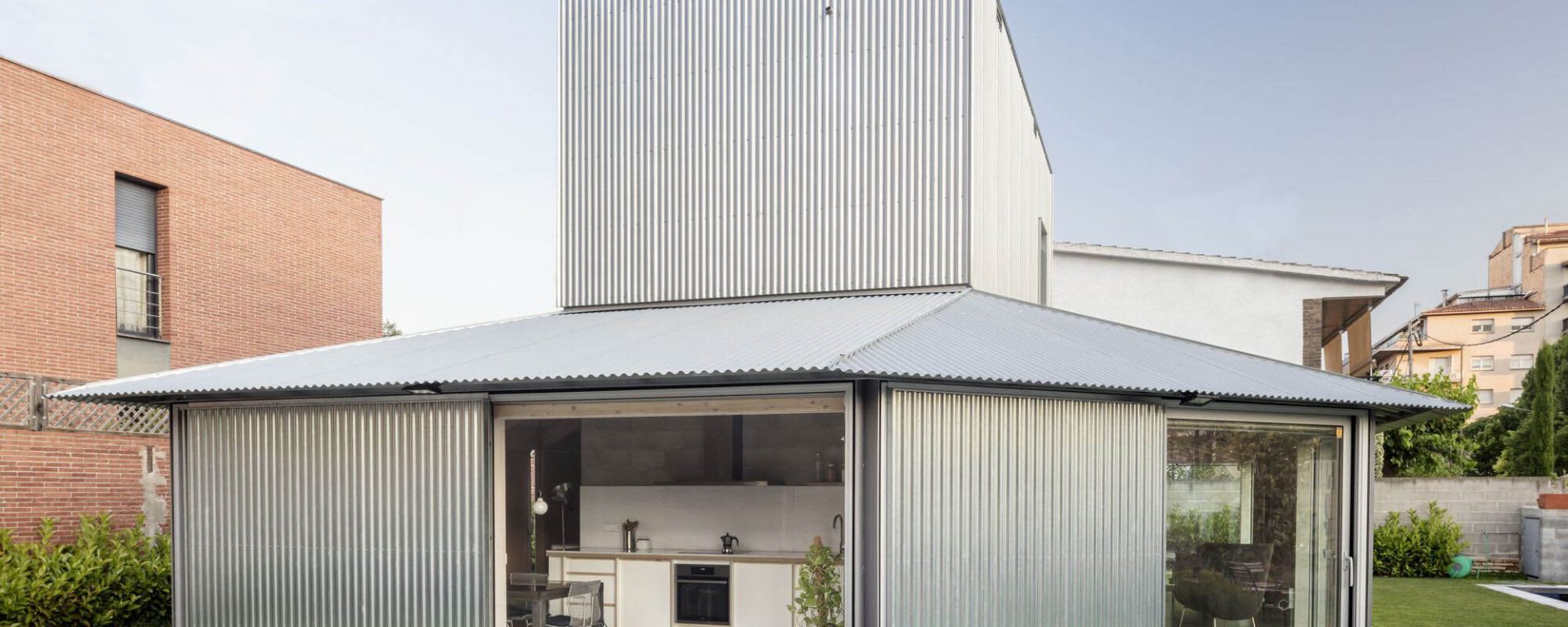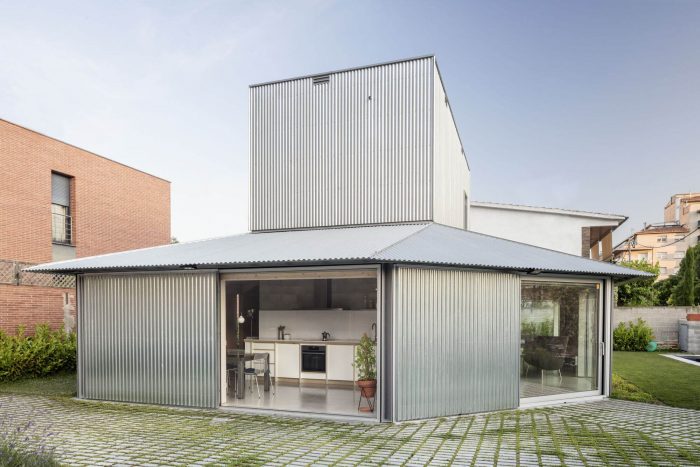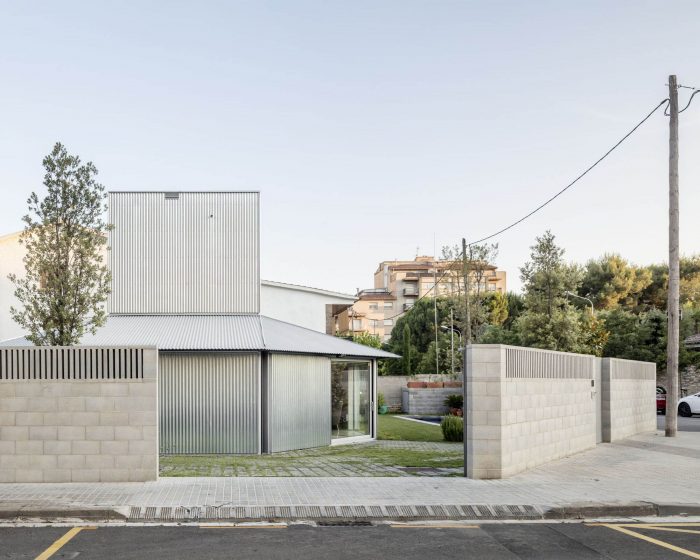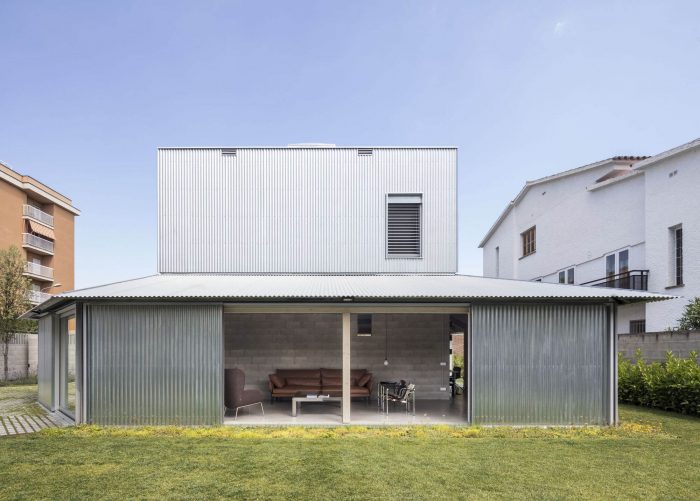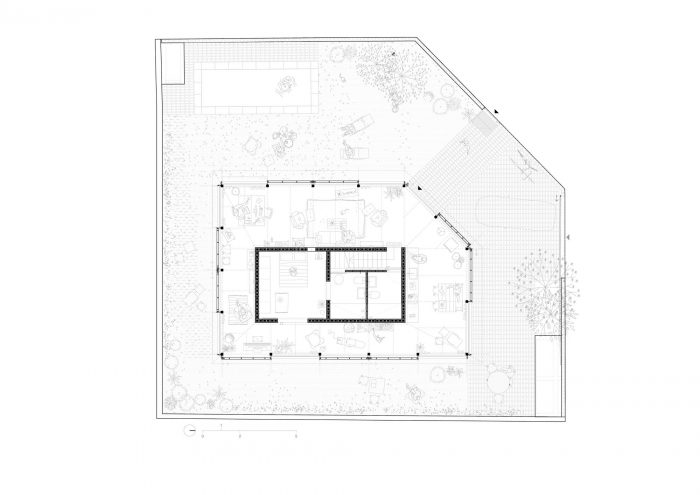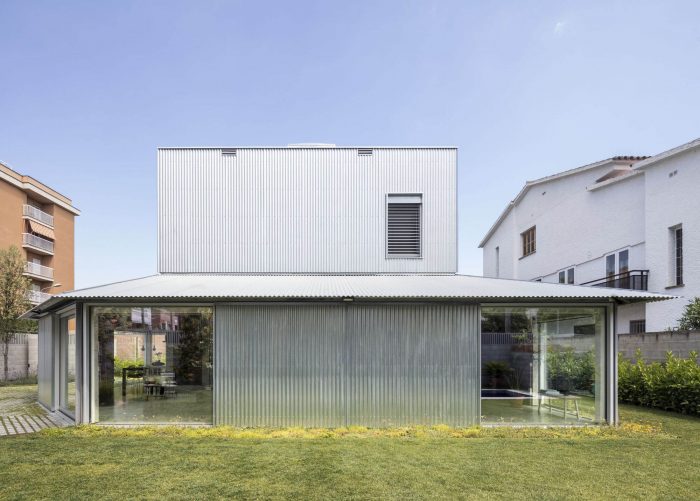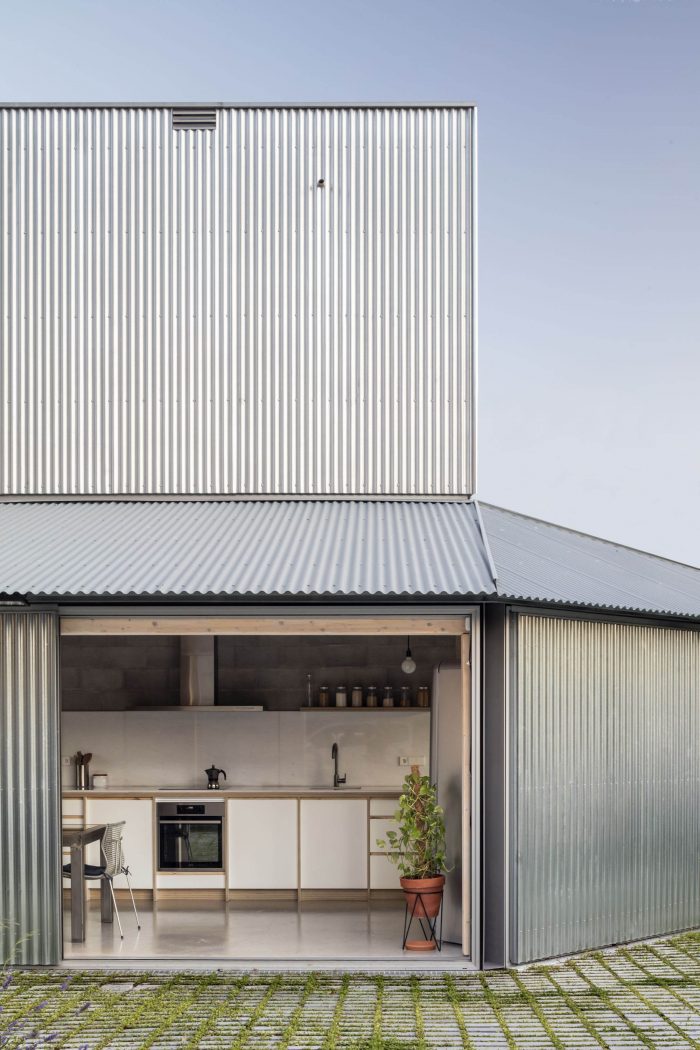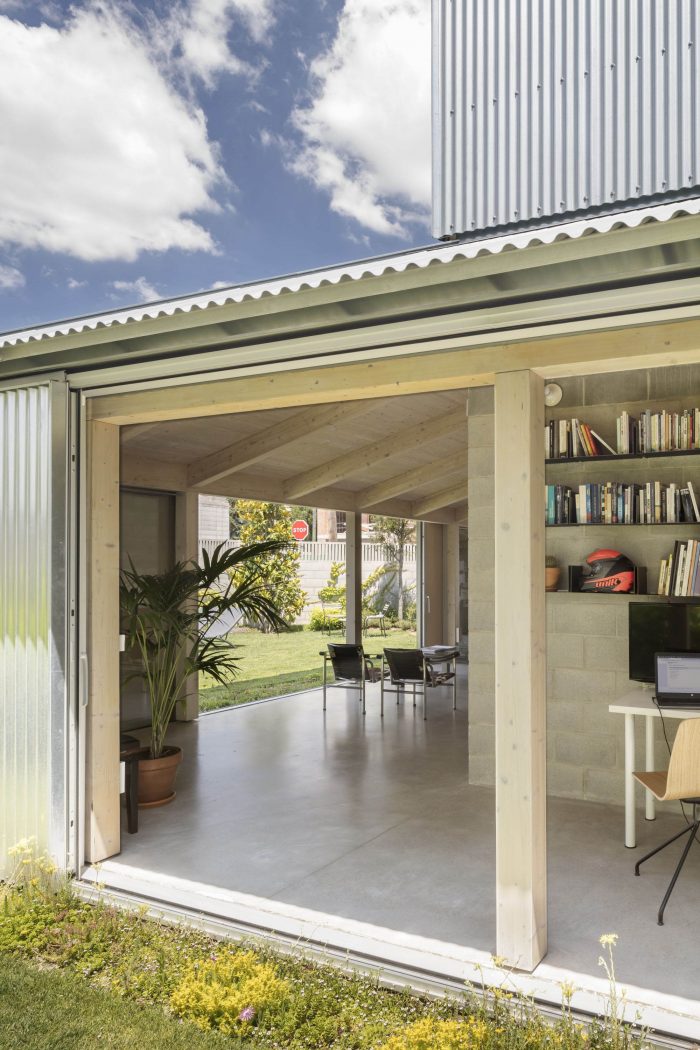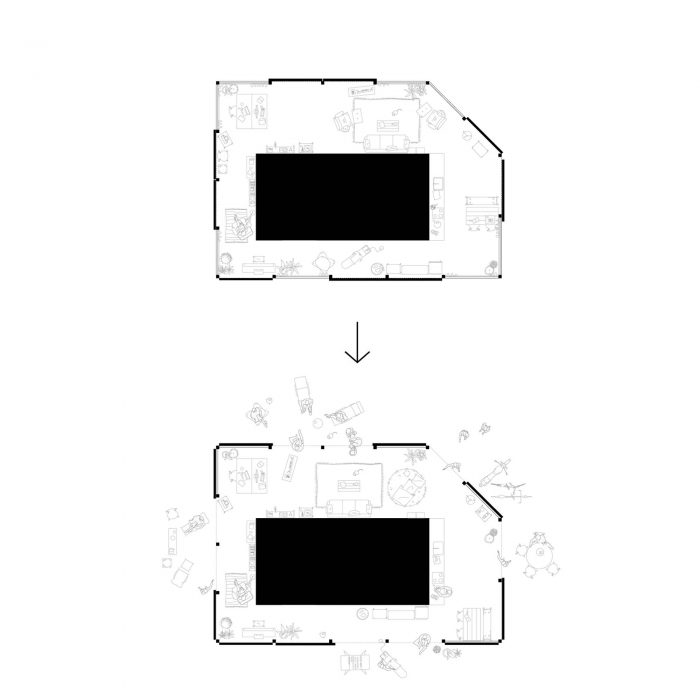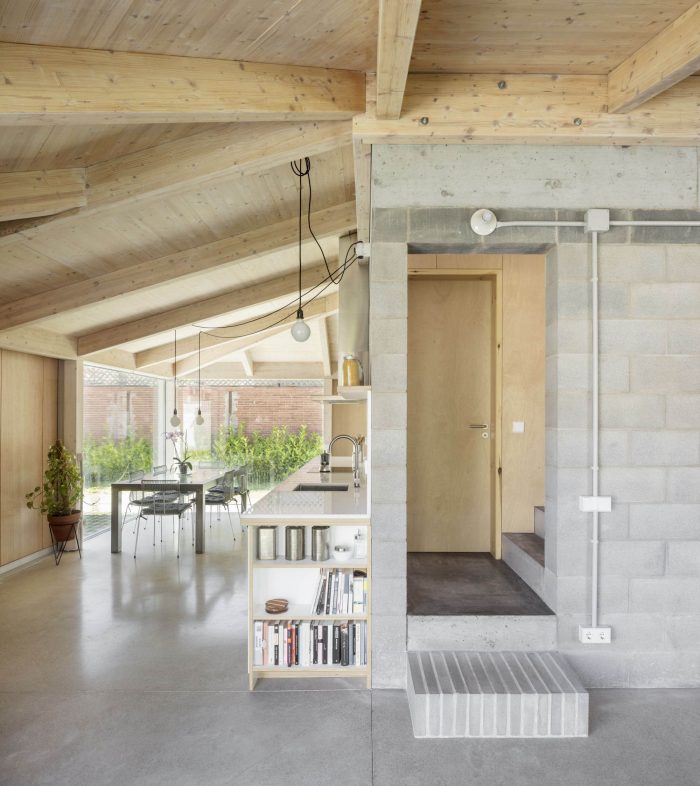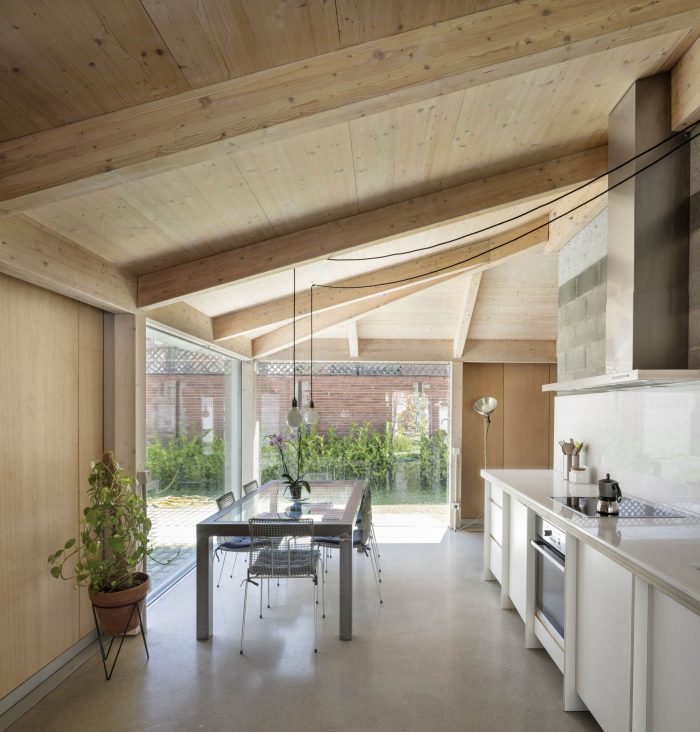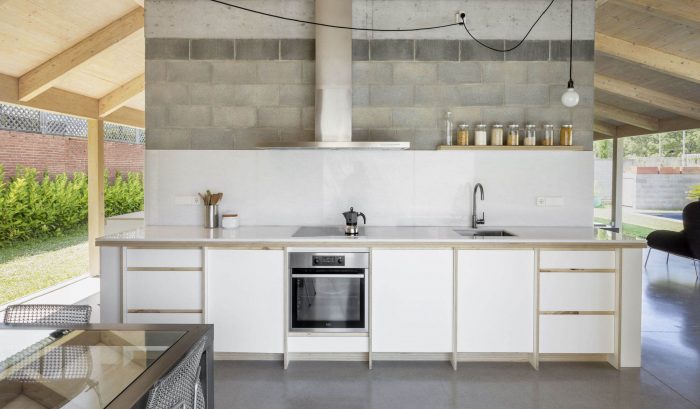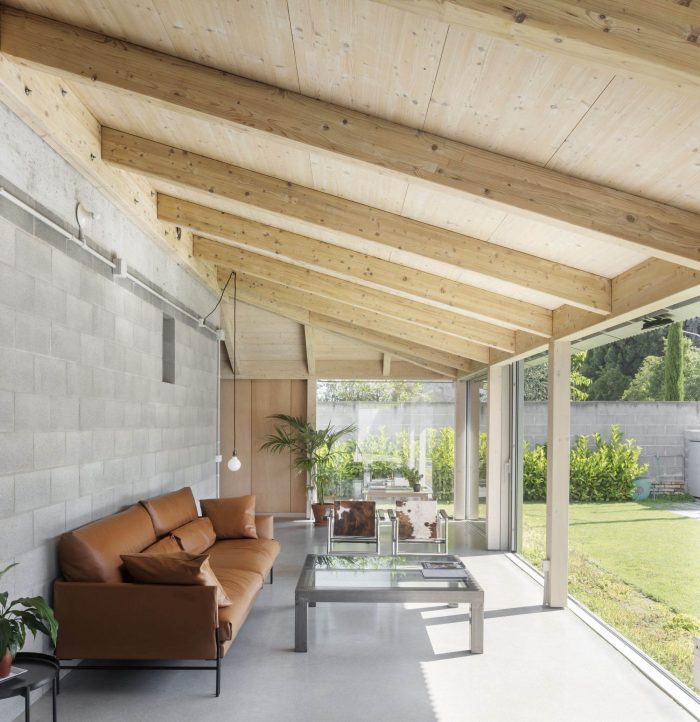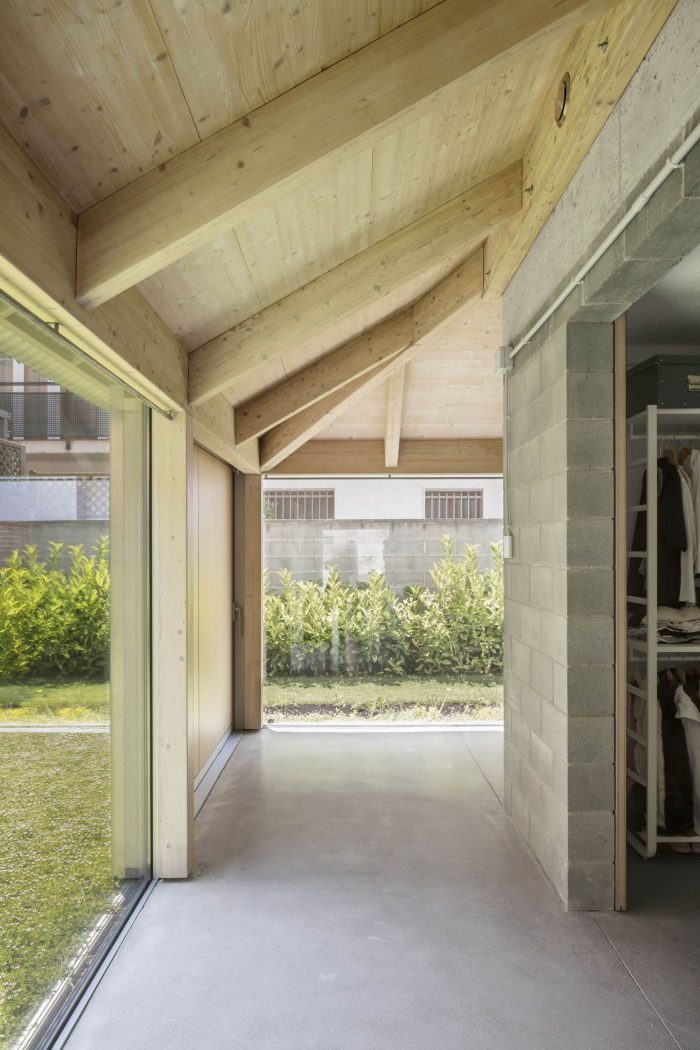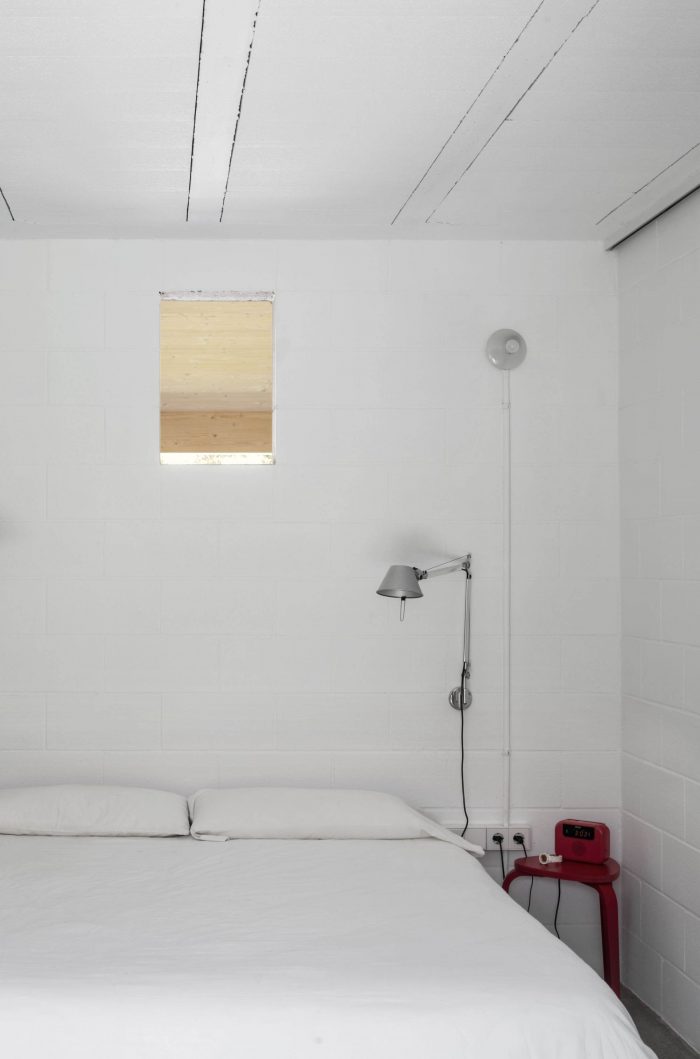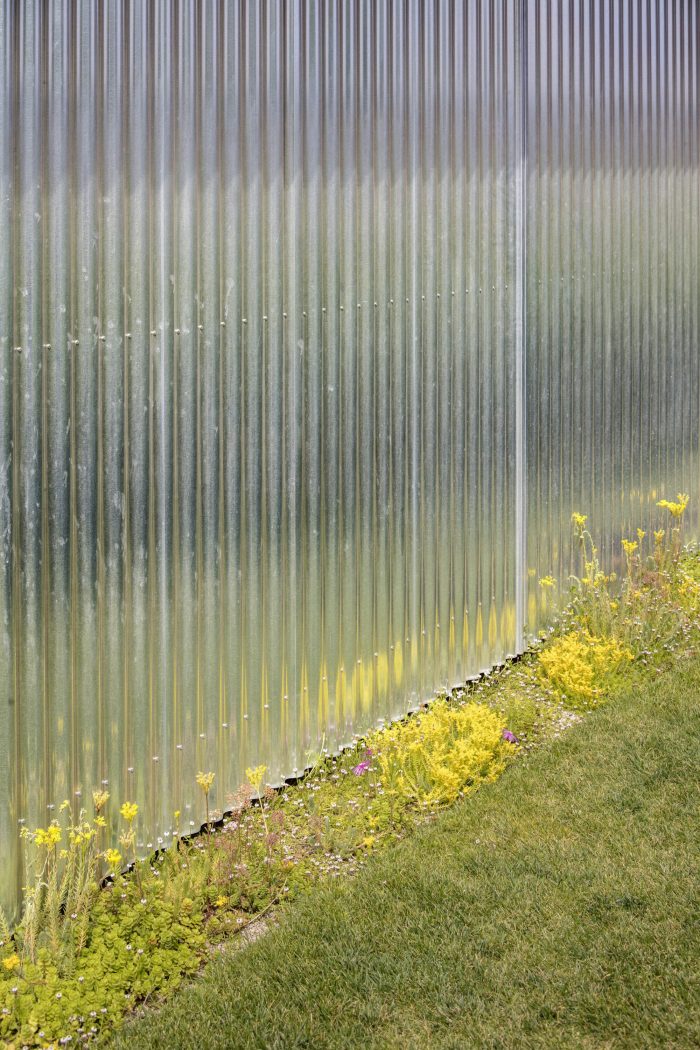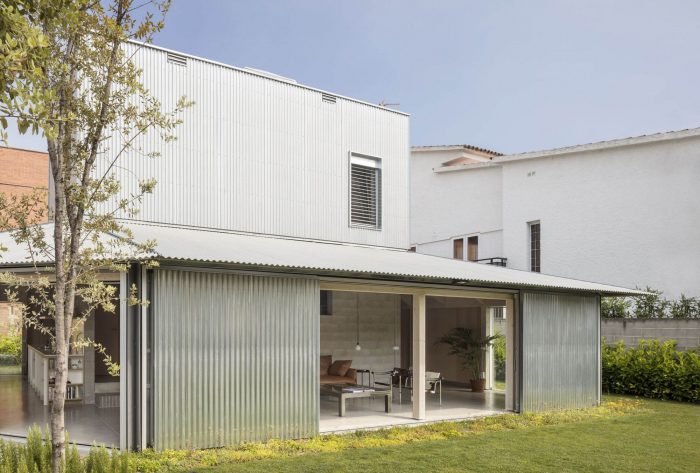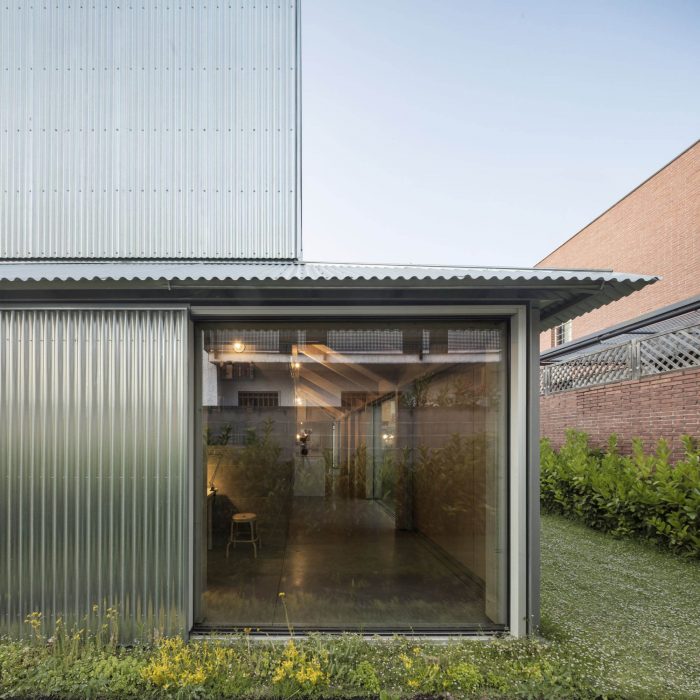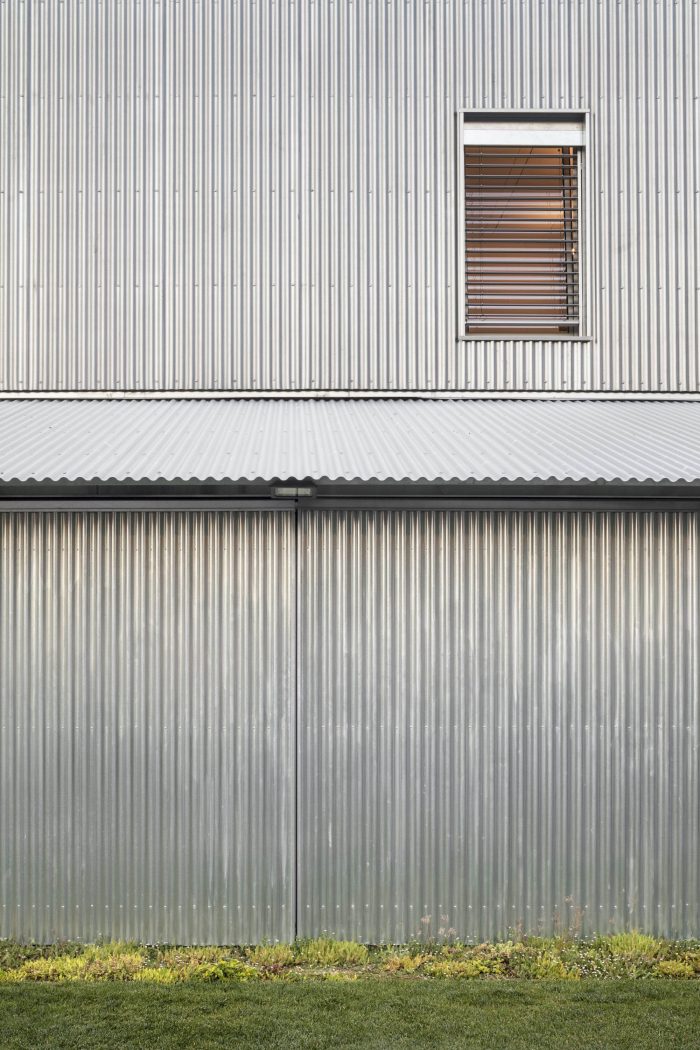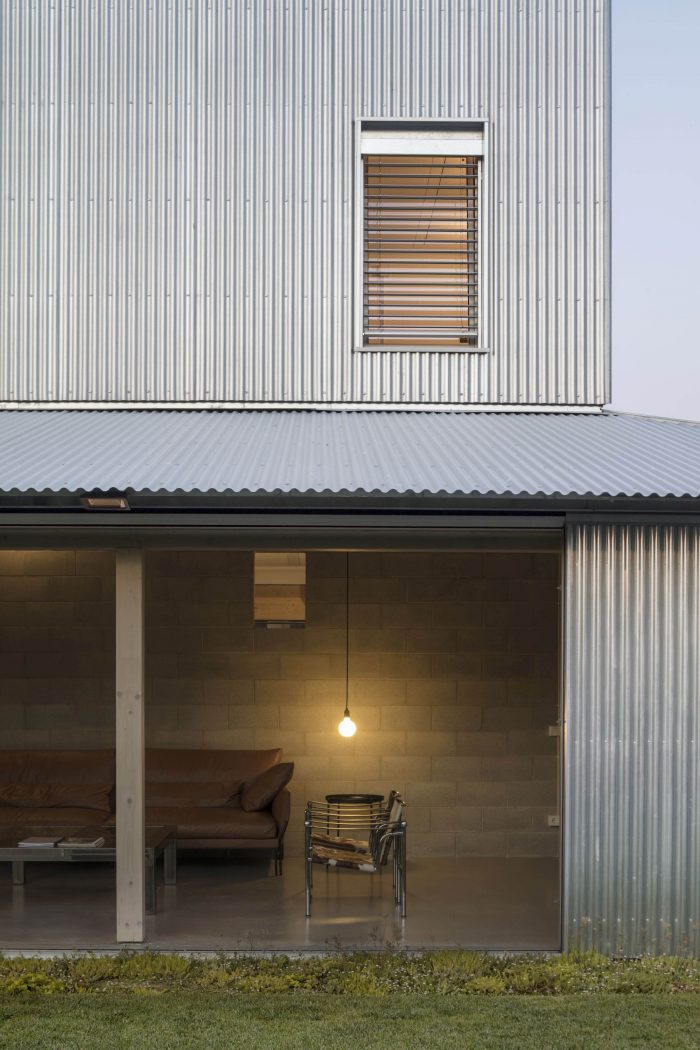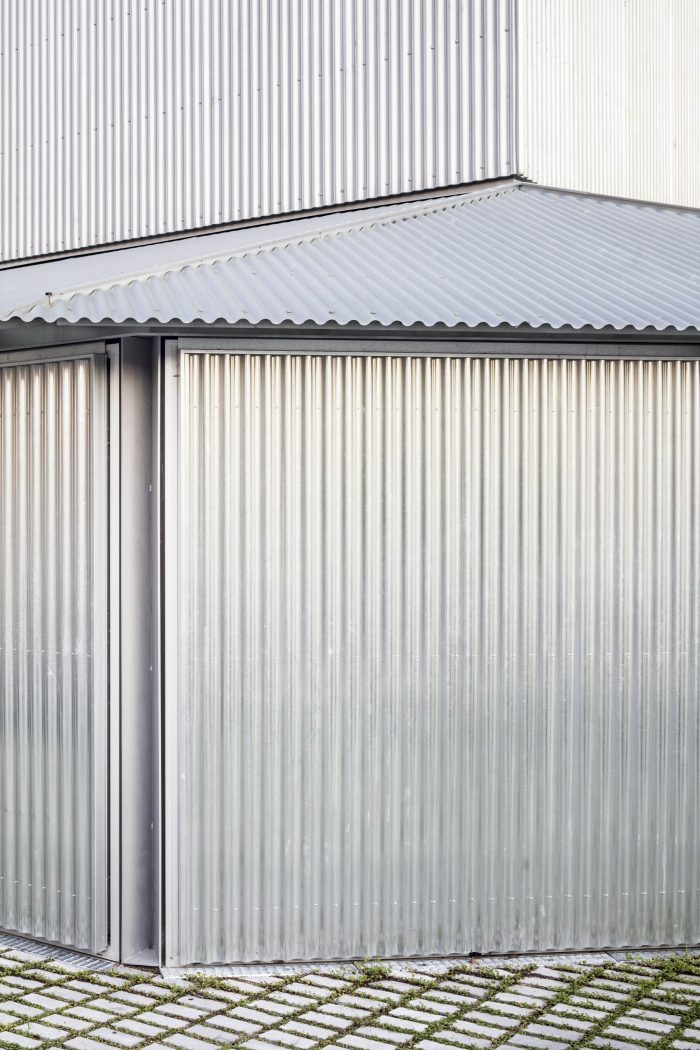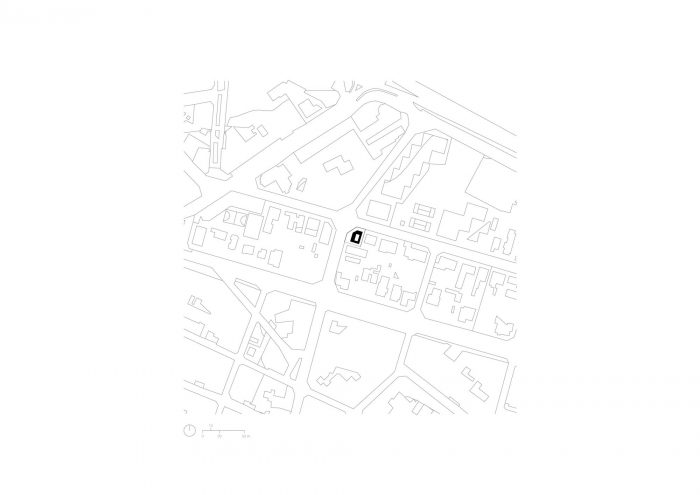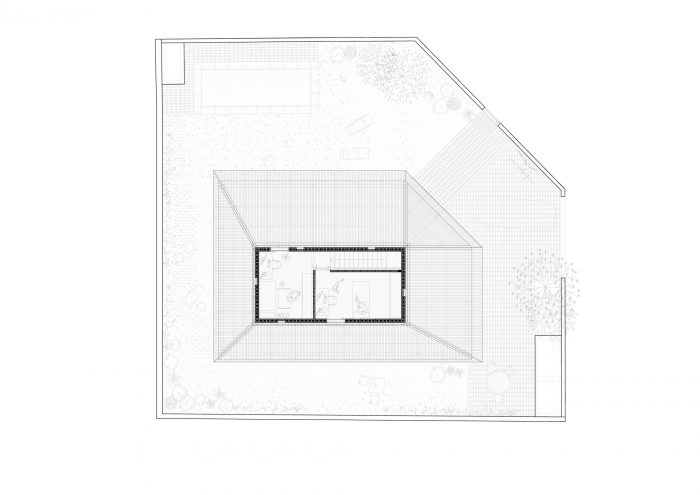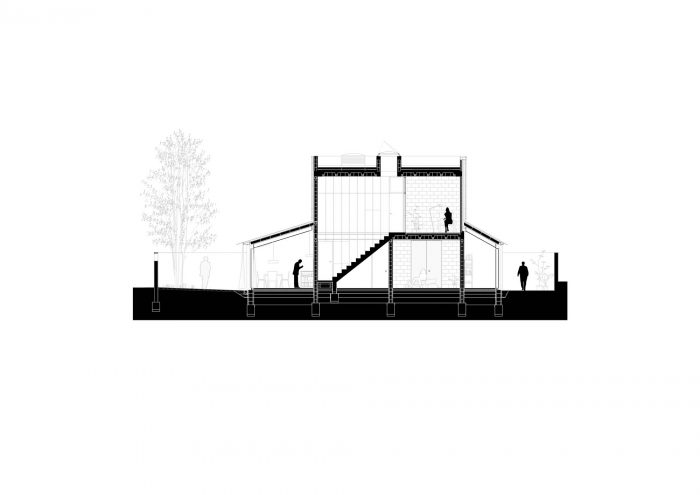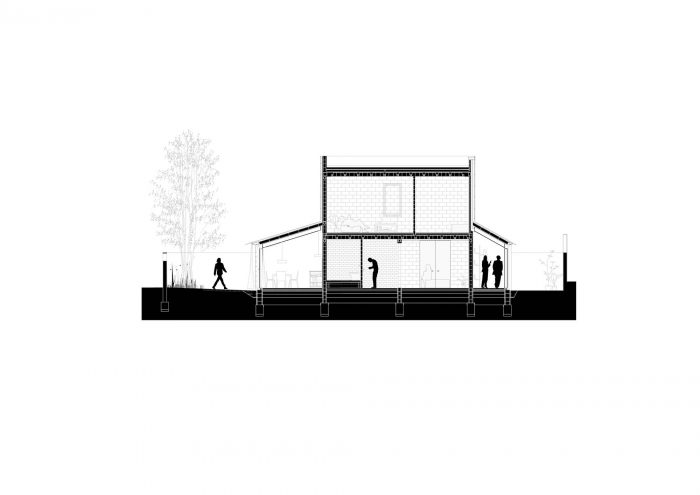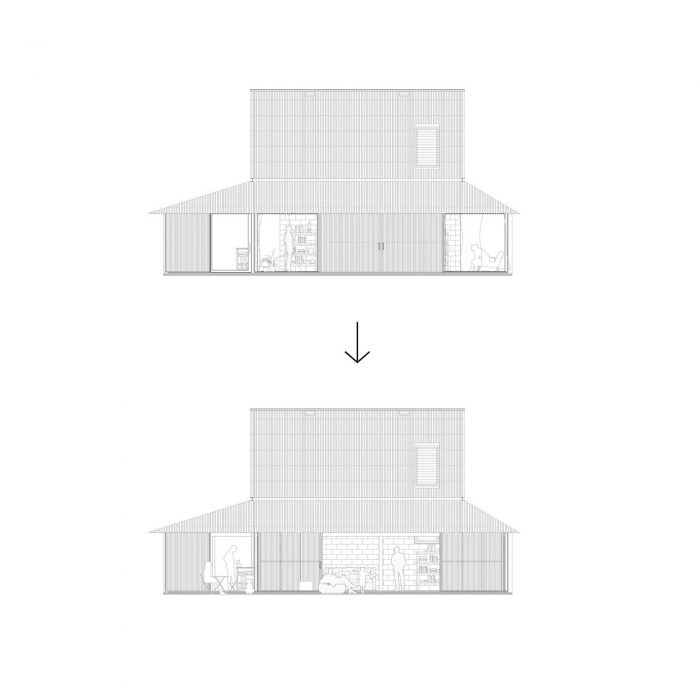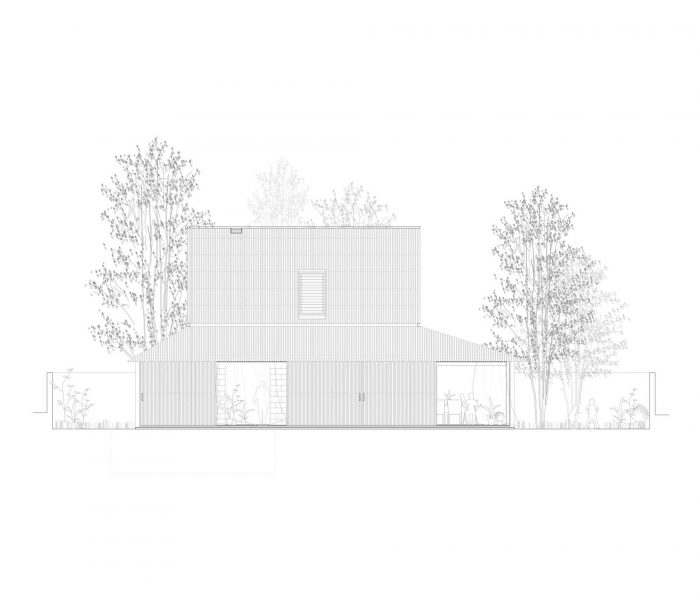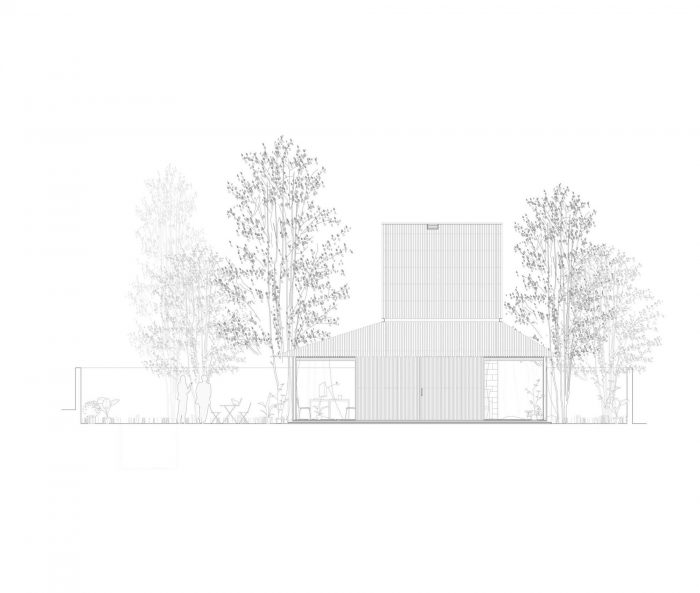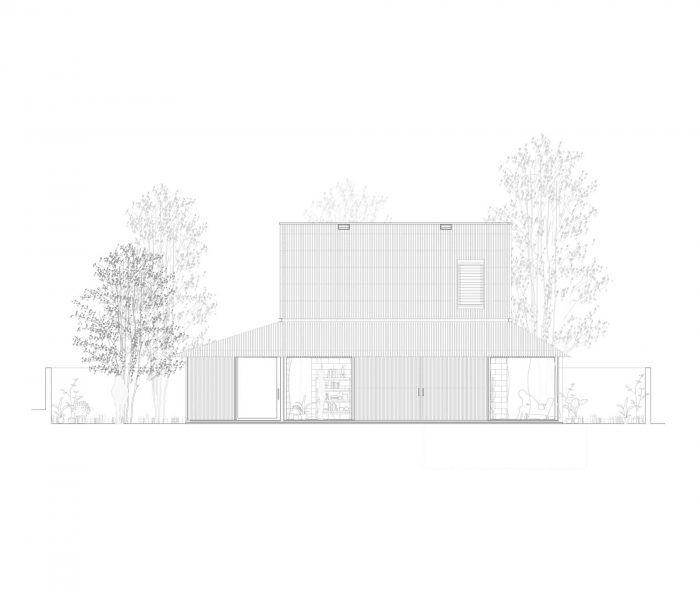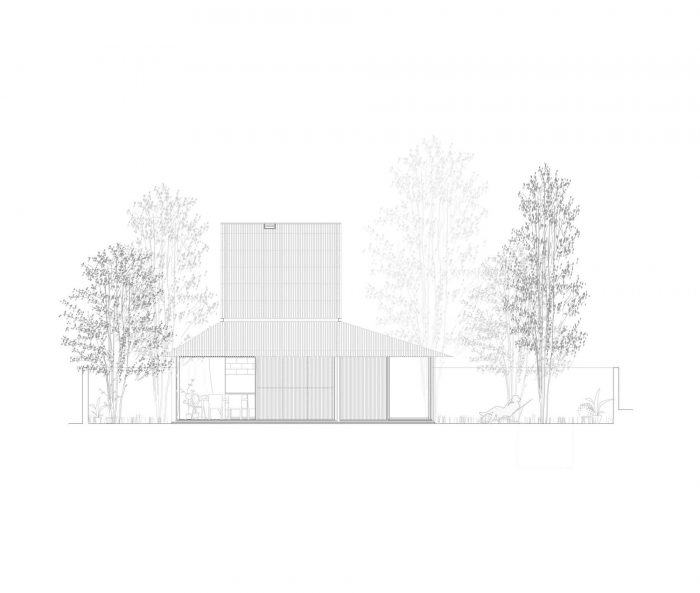对于一个新建筑来说,没有什么环境是不相关的。而往往在几乎每一个决策中,场地本身就会产生影响项目的条件。但这栋房子却不是这样。
No context is irrelevant to a new building. And often the site itself generates conditions affecting the project in almost every decision. This is not the case with this house.
阳光、地块的几何形状–几乎是正方形的倒角–、南边太近的邻居、北边的房屋塔楼,比起地块所在的这块花园城市,更典型的是六十年代的住宅区。四个不好计算的投入。
The sun, the geometry of the plot -almost square with a chamfer-, a neighbour too close to the south, and a tower of houses to the north, more typical of a residential area of the sixties than of this piece of the garden city where the plot is located. Four badly counted inputs.
业主(一对夫妇带着两个孩子)希望有一栋不用维修的房子,一年四季都有很大的私密性和与花园的良好关系–更像是一个院子,有一个位置很好的工作室,以及其他一些通常的要求。而且希望住在现代的房子里–没有大写的房子。还有对日本当代家庭建筑的某种兴趣。
The owners (a couple with two children) wanted a house without maintenance, with a lot of privacy and a good relationship with the garden -more like a courtyard- all year round, a well-placed studio, and a few other usual requirements. And a desire to live in a modern house -without a capital letter-. And a certain interest in contemporary Japanese domestic architecture.
有了这些决定性的因素,我们很清楚,历史必须从头开始书写,或者说从建筑本身开始。我们必须创造一个新的场地。
该地块很平坦,略低于街道水平。没有树木。
With these determining factors, it was clear to us that history had to be written almost from scratch, or rather from within, with the building itself. A new site had to be created.
The plot was flat, slightly below street level. No trees.
第一步是尽可能地建一个不透明的围墙,大约两米高,把房子偏向东边,填满120平方米的最大占用面积,填满除西边以外的所有建筑界限,因为那里常年有阳光照射进来。那里是周边花园变宽的地方(7.6米),其余的地方有适应法规的可变宽度(对邻居3米,对街道5到6米之间)–法规强行规定的东西不一定有多大意义。
The first step was to build an opaque fence as high as possible, about two meters, and place the house off-centered to the east, filling the 120m2 of maximum occupation and filling all the building limits except the west, where the sun comes in all year. There is where the perimeter garden becomes wider (7.6m), the rest has variable widths adapted to the regulations (3m to neighbours and between 5 and 6 to the streets) -the regulations force things that do not always make much sense-.
在北面,我们种植了一些常青树,随着时间的推移,这些树将剥夺邻近的房屋塔楼的视野。
To the north, we planted some evergreen trees that, with time, will deprive the view of the neighbouring tower of houses.
新房子的结构是四个同心层,平行于地块的界限,就像一个洋葱。从外到内:建筑围墙、周边庭院,以及环绕中心主体–两层混凝土砖箱的连续廊道。
The new house is structured in four concentric layers parallel to the limits of the plot, like an onion. From outside to inside: the building fence, the perimeter courtyard, and a continuous gallery that surrounds the central body, a two-storey concrete block box.
在项目初期,房子比较大的时候,围廊是一个中间空间,生物气候化,用途互补,所有的主要作品都安置在房子的核心部分。后来由于预算的调整,缩小了面,只把房间、卫生间、楼梯留在中心体。公共区域被移到了画廊。
In the initial phases of the project, when the house was bigger, the perimeter gallery was an intermediate space, bio climatized, with complementary uses, and all the main pieces were housed in the core of the house. Later, due to budgetary adaptation, the surface was reduced and only the rooms, the bathrooms, and the stairs were left in the central body. The common areas were moved to the gallery.
几乎所有的事情都发生在廊道里。它是一个走廊,与查尔斯-摩尔的奥林达房子有一定的共鸣,它与天井提出了激烈而多变的关系(季节性);在夏天,通过大面积的滑动墙,它变成了一个门廊;在冬天,角落里的大窗户提供了花园的框架景观,并捕获了西边的太阳辐射。与往常不同的是,在这所房子里,窗户是固定的,而活动门是不透明的,这种情况下,根据什么是开放的,什么是关闭的,不断变换着外墙和走廊。
Almost everything happens in the gallery. It is a veranda, with certain resonances to Charles Moore’s Orinda house, which proposes intense and variable relations (seasonally) with the patio; in summer, through the large sliding walls it becomes a porch; in winter, large windows in the corners offer framed views of the garden and capture solar radiation to the west. Contrary to what is usual, in this house, the windows are fixed, and the mobile doors are opaque, a condition that constantly transforms the facade and the gallery, depending on what is open and what is closed.
如同Lina Bo Bardi的Santa María dos Anjos小教堂一样,带有斜屋顶的阳台采用轻盈干练的系统:木质结构(柱子、梁和屋顶)和玻璃、铝、木头和波纹镀锌板围合。与画廊的轻盈相比,中央核心区庞大而紧凑,热惯性较大。廊内留有可见的块状墙体和板块,房间内则刷成白色。
As in the chapel of Santa María dos Anjos by Lina Bo Bardi, the veranda, with its sloping roof, is built with light and dry systems: wooden structure (pillars, beams, and roof) and glass, aluminum, wood and corrugated galvanized sheet enclosures. In contrast to the lightness of the gallery, the central core is massive and compact, with more thermal inertia. The block walls and slabs are left visible in the gallery and painted white in the rooms.
冬天,廊道对整个中央主体(卫生间和卧室)进行遮挡和加热,中央主体没有自己的气候系统(在底层);混凝土地面,惯性较大,除了按时接受太阳直射外,通过地暖加热,二层的房间也是如此;发电方式为空气热泵。
In winter, the veranda shelters and heats the entire central body (bathrooms and bedrooms), which does not have its own climate system (on the ground floor); the concrete floor, with a lot of inertia, apart from receiving direct solar radiation on time, is heated via underfloor heating, as are the rooms on the second floor; generation is by an aerothermal heat pump.
夏天,当推拉门关闭时,窗户通过屋顶的悬空和反光的外帘来遮挡阳光。同时,屋顶的倾斜度有利于分层的被动式通风系统,通过隐藏在外墙的四个管道将热空气排出,这些管道就像小型的太阳能烟囱一样,有利于自然翻新,并有利于阳台的冷却。
In summer, when the sliding doors are closed, the windows are protected from the sun by the overhang of the roof and by reflective exterior curtains. At the same time, the inclination of the roof favors, by stratification, a passive ventilation system that evacuates the hot air through four ducts hidden in the facades that work as small solar chimneys, favoring the natural renovation and facilitating the cooling of the veranda.
在与客户第一次见面的十年后,中间经历了漫长而紧张的历史,905号房屋竣工了。在项目的过程中,漫长的时间是另一个决定性的工具。
建筑有时会利用(它的)缓慢性。
Ten years after the first meeting with the clients, and with a long and intense history in between, house 905 was completed. The long time was another determining tool in the process of the project.
Architecture sometimes takes advantage of (its) slowness.
建筑师:HARQUITECTES
面积:154 m²
年份:2020年
摄影:Adrià Goula
首席建筑师:David Lorente、Josep Ricart、Xavier Ros、Roger Tudó
合作者:Blai Cabrero, Jordi Mitjans, Montse Fornés
工料测量师:Carles Bou
国家:西班牙
Architects: HARQUITECTES
Area: 154 m²
Year: 2020
Photographs: Adrià Goula
Lead Architects: David Lorente, Josep Ricart, Xavier Ros, Roger Tudó
Collaborators:Blai Cabrero, Jordi Mitjans, Montse Fornés
Quantity Surveyor:Carles Bou
Country:Spain

